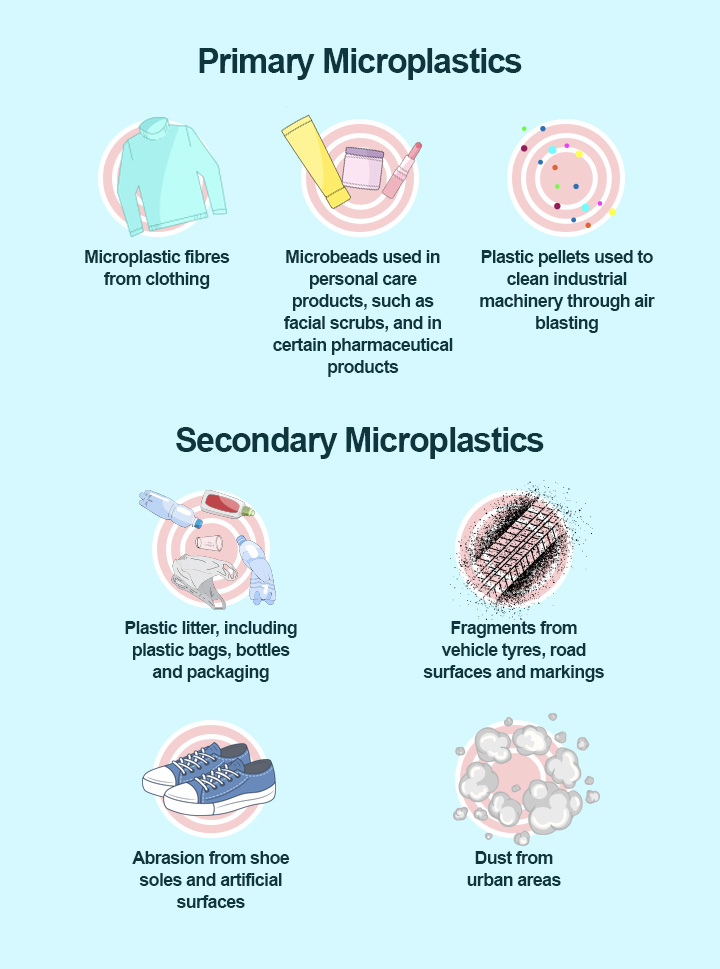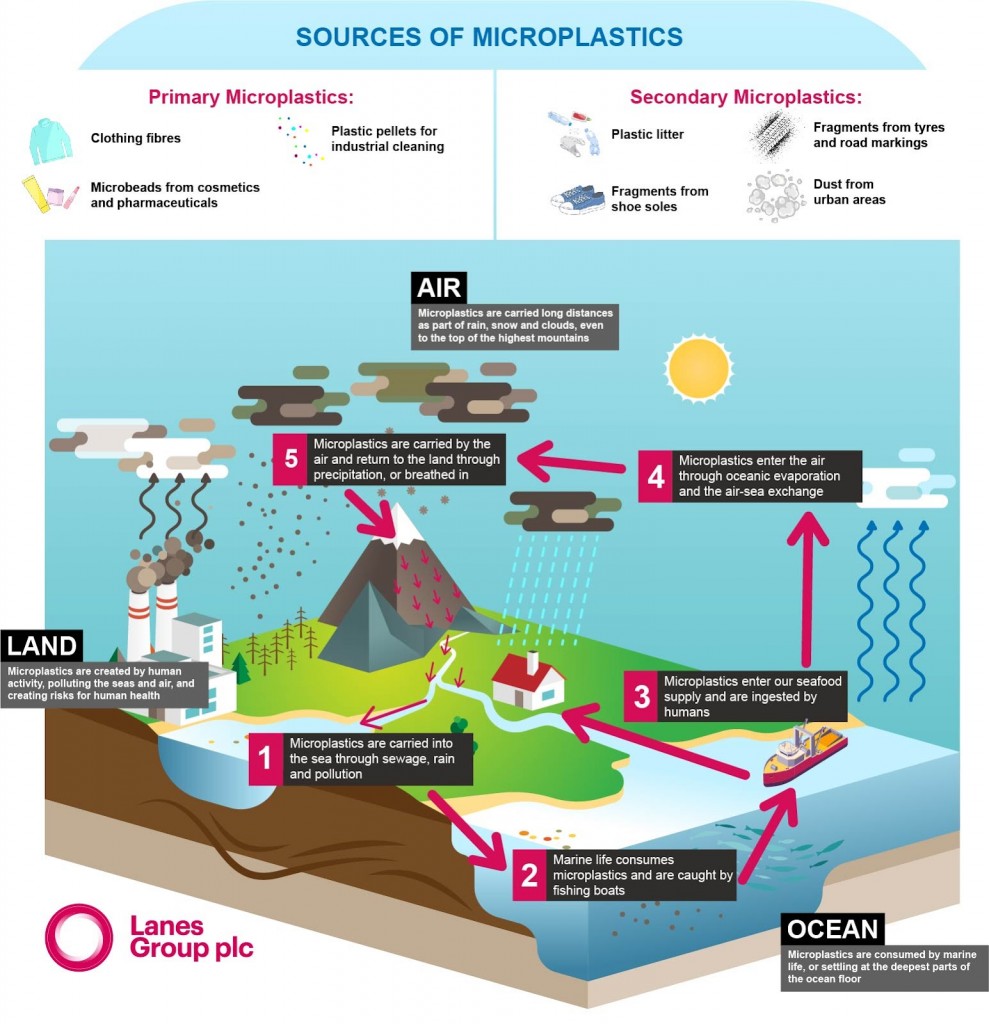The Microplastics Cycle: How do microplastics enter the environment?
If you think back to your school days, you may remember learning about the water cycle, or the process through which the world’s natural supplies of water are constantly changing form and cycling through the environment and atmosphere. In recent years, a new manmade cycle has started to reshape our natural environment – posing a significant danger.
This is the Microplastics Cycle, the process through which microplastic pollution is being generated from manufacturing and everyday products, before spreading through every part of the environment – from the air we breathe to the waters that surround us, and even into the food we consume on a daily basis.
Unfortunately, the Microplastics Cycle is becoming more and more of a prevalent factor – and this will only get worse unless action is taken at a national and global level to curb the use of microplastics in manufacturing.
As part of our Microplastics Out of Our Drains (MOOD) campaign, Lanes Group has created helpful diagrams to illustrate exactly how microplastics are spreading across the environment at every level.
What are the sources of microplastics?
To understand how microplastics are spreading so fast, you must first understand where they actually come from – and the answer is almost everything! It is estimated that the world produces around 380 million tonnes of plastic every year, and this number is only growing.
The microplastics that have infested our environment come from all sorts of sources, both from primary microplastics – i.e. plastics that are intentionally created at a micro-scale for manufacturing reasons – and from secondary microplastics, which are plastic particles that are created when a larger plastic item breaks down.
However, the most common microplastic sources include the following:

Primary microplastics:
- Microplastic fibres from clothing
- Microbeads used in personal care products, such as facial scrubs, and in certain pharmaceutical products
- Plastic pellets used to clean industrial machinery through air blasting
Secondary microplastics:
- Plastic litter, including plastic bags, bottles and packaging
- Fragments from vehicle tyres, road surfaces and markings
- Abrasion from shoe soles and artificial surfaces
- Dust from urban areas
How do microplastics spread through the environment?
Once these plastic products have been created, they are able to circulate through the environment in various ways. Some of these can be attributed to bad habits, such as littering and other forms of improper waste disposal, but in other cases, microplastics are generated and spread unavoidably – showing just how ingrained plastic pollution has become in our daily lives.
Take a look at our diagram of how the Microplastics Cycle works:

The consequences of the Microplastics Cycle
As our diagram shows, microplastics are now moving through the environment constantly, from land to sea to air and back again. Trillions of tonnes of plastic have now been embedded in the ecosystem, and the consequences of this are potentially serious for people and the planet:
- Humans, animals and marine life are unknowingly consuming microplastics all the time, potentially causing harm to our health
- Plastic pollution has infiltrated every part of the planet, from the deepest part of the ocean to the very highest peaks
- Microplastics are so prevalent in the environment that they can never realistically be removed
Microplastics also pose major challenges for our sewer network and wastewater systems. Products such as wet wipes, nappies, period care products, cotton buds and face masks are often wrongly flushed down the drains, where their microplastic content makes them difficult to break down, leading to fatbergs and other stubborn blockages. This damages the pipes and sewers, leading to a greater risk of flooding and requiring expensive repairs – which is why Lanes Group is campaigning for more to be done to tackle this problem.
What can we do about it?
Stopping the Microplastics Cycle in its tracks will take more than just a small change in habits. Our MOOD campaign is calling for a number of decisive actions that we believe will help to make a meaningful difference:
- The UK should ban ALL intentionally added microplastic particles in consumer or professional use products
- UK water companies should work to establish new regular monitoring programmes for microplastics
- Manufacturers should be required to fit microfibre filters in all new domestic and commercial washing machines
The Marine Conservation Society believes that banning microplastics could reduce the amount of plastic entering our rivers and oceans by around 400,000 tonnes over a 20-year period – a crucial step in mitigating the harmful effects of the Microplastics Cycle.
To find out more why we are campaigning for these changes, please visit our MOOD campaign hub.







